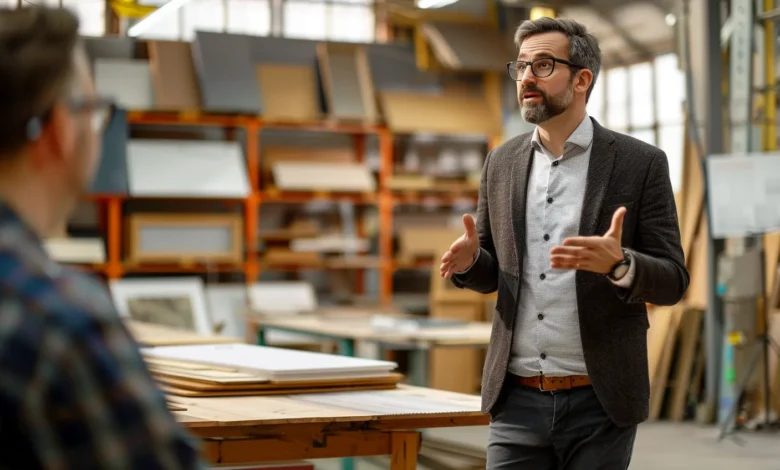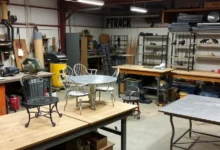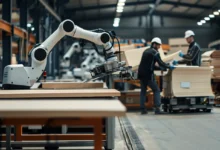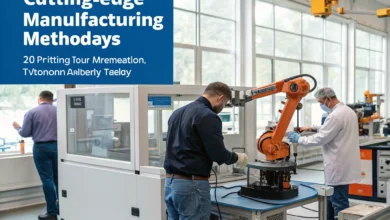Investing in employee development in the furniture industry

The Furniture Industry Faces Many Challenges
Growing competition, changing trends, and rising customer expectations force companies to constantly improve their products and services. A key element of this process is investing in employee development. A highly skilled workforce not only improves product quality but also increases innovation and efficiency within the company.
Why Is Employee Development Key?
Investing in employee development in the furniture industry brings numerous benefits for both companies and employees. A highly qualified team forms the foundation upon which a competitive advantage can be built. Let’s take a closer look at why developing competencies is so important and what benefits it brings.
Increased Quality of Products and Services
High product quality is one of the most important factors in a company’s market success. Technical training and workshops help employees better understand modern technologies and production processes, which directly translates into the quality of manufactured furniture. Employees who stay up to date with the latest trends and technologies can create products that meet the highest quality standards. Moreover, strong quality management skills allow quick responses to production issues, minimizing losses and increasing customer satisfaction.
Greater Employee Engagement and Motivation
Investing in employee development not only improves their skills but also boosts their engagement and motivation. Employees who see that the company cares about their growth are more loyal and dedicated to their workplace. Regular training and opportunities for professional development make employees feel valued and motivated to perform better. Increased engagement leads to a more positive work atmosphere, which in turn improves the productivity and efficiency of the entire team.
Reduced Staff Turnover
High employee turnover is one of the biggest challenges for companies in the furniture industry. Recruitment and training of new employees are costly, while frequent staff changes negatively affect stability and efficiency. Investing in the development of current employees is an effective way to reduce turnover. Employees who have opportunities for continuous growth and career advancement are less likely to leave. As a result, companies can rely on a stable and experienced team that understands the production process and can perform tasks effectively.
Better Adaptation to Market Changes
Like many other sectors, the furniture industry undergoes constant change. New technologies, evolving trends, and increasing customer demands require companies to remain flexible and adaptable. Employees who regularly attend training and workshops are better prepared to face these changes. They can quickly implement new solutions and respond more effectively to customer needs, helping the company maintain competitiveness.
Building the Company’s Image as an Attractive Employer
Investing in employee development also builds a positive image of the company as an attractive workplace. Companies that offer continuous development opportunities are perceived as better employers. This, in turn, attracts talented professionals who want to grow their careers in a dynamic and supportive environment. A positive employer image also strengthens the company’s reputation in the market, leading to greater trust from clients and business partners.
📊 Interesting fact: According to Gallup research, companies that invest in employee development report 21% higher profitability compared to those that don’t. Additionally, engaged and well-trained employees are 17% more productive, showing how crucial it is to invest in human capital.
Types of Training in the Furniture Industry
For the furniture industry, it is essential that employees possess up-to-date and relevant skills. Various training programs, tailored to the specifics of the job and market needs, are a crucial element of every company’s development strategy. Below are the main types of training that can significantly improve work quality and production efficiency.
Technical Training
Technical training is fundamental for production workers. It covers the operation of modern machines and technologies used in furniture manufacturing.
Machine operation: Operating advanced CNC machines, hydraulic presses, or lacquering systems requires specialist knowledge. Training ensures efficient and safe work while reducing the risk of breakdowns and accidents.
Implementing new technologies: Innovations such as 3D printing or robotics are increasingly common in furniture production. Training helps companies adopt these technologies to stay competitive.
Design Training
Furniture design requires both creativity and knowledge of current trends and technologies.
Design software: Mastery of tools such as AutoCAD, SketchUp, or SolidWorks is essential. Training enables precise and professional project creation.
Trends and innovation: Training in the latest design trends helps designers create modern, attractive furniture that meets market demand.
Project Management Training
Efficient project management is key to timely order fulfillment and maintaining quality standards.
Planning and scheduling: Training helps employees manage time and resources effectively, creating realistic schedules and tracking progress.
Team management: Training also develops leadership skills, teaching how to motivate teams, delegate tasks, and resolve conflicts.
Customer Service Training
In the B2B furniture industry, communication and negotiation skills are crucial.
Communication techniques: Training improves employees’ ability to understand customer needs and maintain strong business relationships.
Business negotiations: Training helps employees achieve favorable contract terms, improving profitability and client satisfaction.
📊 Interesting fact: According to Deloitte, companies that invest in training have a 34% higher employee retention rate compared to those that don’t.
Benefits for Employees and Companies
Employee development is a strategy that benefits both companies and workers. Supporting skills growth is not only an investment in the company’s future but also in employee satisfaction and loyalty.
Increased Productivity and Efficiency
Regular training directly improves productivity.
Better knowledge of production processes: Practical workshops help employees understand modern technologies, leading to greater efficiency.
Automation skills: Trained workers make better use of automated systems, reducing errors and boosting output.
Higher Employee Satisfaction and Engagement
Employees with development opportunities are more satisfied and motivated.
Personal growth: Training opportunities give employees a sense of career progression.
Team collaboration: Group training strengthens teamwork and improves workplace atmosphere.
Improved Product and Service Quality
Well-trained staff can deliver products that meet high standards.
Precision and accuracy: Technical skills ensure high-quality furniture manufacturing.
Innovation and creativity: Design and technology training stimulates innovative product development.
Increased Loyalty and Retention
Employees offered career growth opportunities are more likely to stay.
Career advancement: Training prepares workers for higher positions, boosting loyalty.
Reduced turnover: A satisfied and motivated workforce ensures production stability.
📊 Interesting fact: According to LinkedIn research, 94% of employees say they would stay longer at a company if it invested in their career development.
Conclusion
Investing in employee development in the furniture industry is a strategic move with multidimensional benefits. Training not only improves product quality but also boosts employee engagement, efficiency, and innovation.
The benefits are undeniable: higher loyalty, reduced turnover, improved teamwork, and stronger competitiveness. Companies that consistently invest in human capital build long-term advantages that drive sustainable growth.
In the face of increasing competition and rapid market changes, employee development is no longer optional—it’s a necessity. Investing in people is investing in the future, ensuring higher efficiency, innovation, and satisfaction for both employees and customers.














